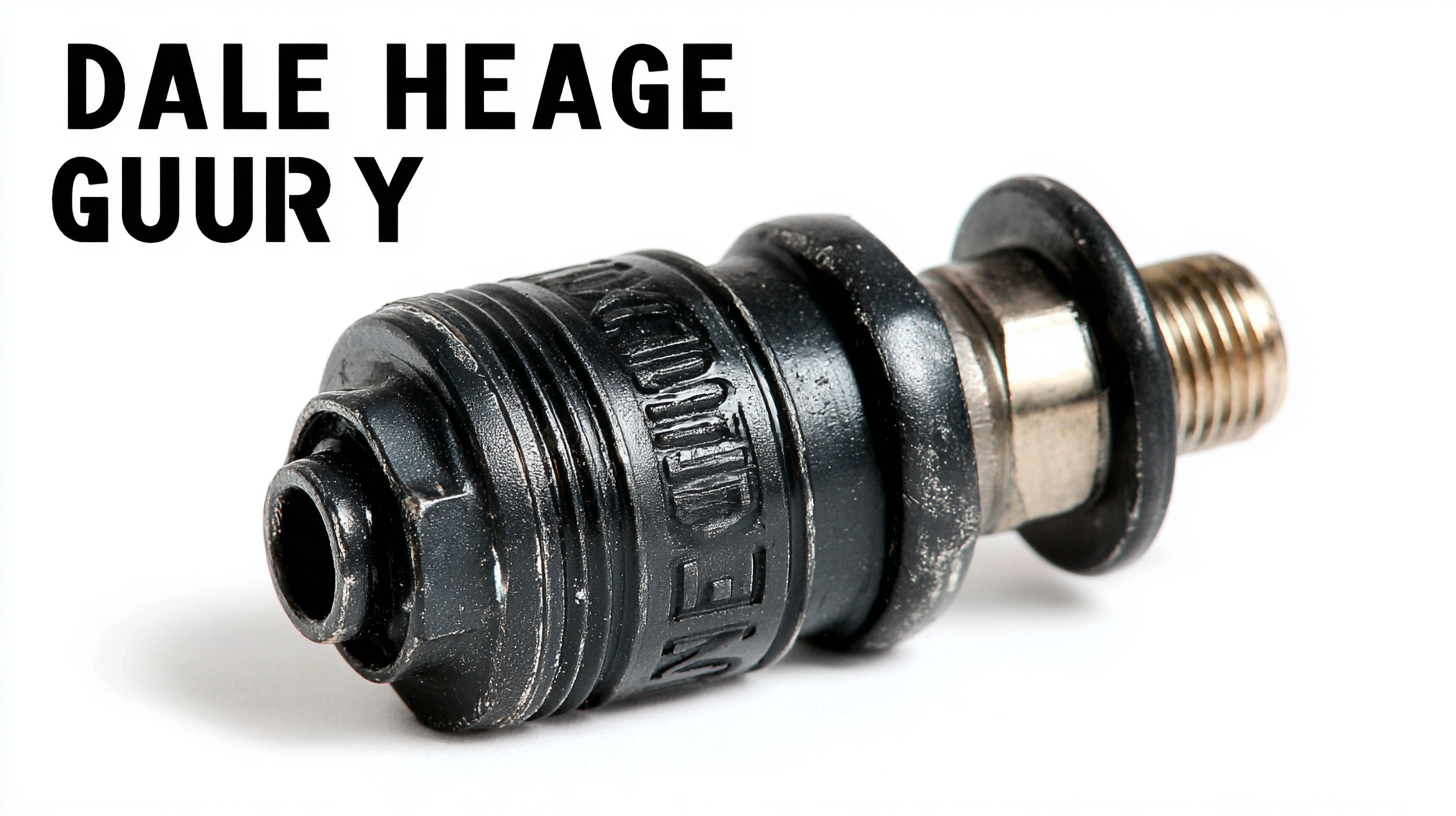
In today's competitive market, ensuring the longevity and reliability of tools and equipment is crucial for both individual contractors and large enterprises. The demand for Male Plug Heavy Duty accessories has surged, driven by industries that rely on robust electrical connections under high-stress conditions. According to a recent industry report by Technavio, the global heavy-duty electrical connector market is projected to grow by over 5% annually, reflecting the increasing need for durable and efficient connection solutions.

This guide aims to provide valuable insights into best practices for after-sales support and cost-effective repair strategies, specifically tailored for Male Plug Heavy Duty products. By following these strategies, users can enhance their operational efficiency while reducing downtime and repair costs, ultimately leading to greater profitability in their projects.
When it comes to male plugs, understanding the various types available on the market is crucial for both efficiency and compatibility. The primary types of male plugs include standard plugs, heavy-duty plugs, and specialty plugs. Standard plugs are commonly used in household devices, providing a reliable connection for everyday appliances. Heavy-duty plugs, on the other hand, are designed to withstand higher electrical loads and are ideal for industrial and commercial use, where durability and safety are paramount.
In addition to the type of plug, key features such as material, amperage rating, and design play a significant role in their applications. For instance, a heavy-duty plug made from high-quality thermoplastic can offer better insulation and resistance to wear and tear, making it suitable for harsh environments. Understanding these features helps users select the appropriate plug for their specific needs, whether it's for powering tools, machinery, or household items. By familiarizing yourself with the different types and their applications, you can ensure optimal performance and safety in all electrical connections.

When it comes to industrial applications, the durability of male plugs cannot be overstated.
Heavy-duty male plugs are essential for ensuring reliability and safety in high-demand environments. Their robust design withstands harsh conditions, from extreme temperatures to exposure to chemicals, making them the preferred choice for professionals in various sectors. Choosing a durable plug not only enhances operational efficiency but also minimizes the risk of failures that could lead to costly downtime.
To ensure the longevity of your industrial male plugs, consider the following tips:
After sales support plays a crucial role in ensuring the longevity and reliable performance of heavy-duty male plugs, particularly in industrial applications. According to a report by the
International Association of Electrical Inspectors, equipment failures can be significantly reduced—by up to 30%—when robust after sales support is in place. This includes proper technical assistance, timely maintenance,
and effective troubleshooting, all of which contribute to extending the operational life of the equipment.
In addition to professional support, cost-effective repair tips are essential for minimizing downtime and maintenance costs. The Electrical Safety Foundation International emphasizes that preventive maintenance protocols,
such as regular inspections and cleaning, can save companies up to 25% on emergency repair costs annually. By investing in training for staff to recognize potential issues early, organizations can avoid more extensive repairs down the line, ensuring that heavy-duty male plugs remain functional and efficient in demanding environments.
When it comes to maintaining heavy-duty male plugs, cost-effective repair tips can significantly enhance both efficiency and value. One of the first steps in maximizing your maintenance savings is to conduct regular inspections. By identifying wear and tear early on, you can prevent more costly repairs down the line. Look for signs of corrosion, loose connections, or damaged housings. Addressing these issues promptly not only extends the life of your equipment but also ensures safety in operation.

Another practical tip is to use universal replacement parts where possible. Instead of relying solely on branded components that may come with a higher price tag, consider high-quality aftermarket products that can deliver the same performance at a fraction of the cost. This approach allows for significant savings without sacrificing reliability. Additionally, establishing a routine maintenance schedule can help streamline repairs and reduce downtime, enabling your operations to run smoothly.
Finally, don't overlook the value of proper training for your maintenance team. Ensuring that they understand the nuances of handling heavy-duty plugs can drastically reduce the occurrence of unnecessary repairs caused by improper handling. Investing in knowledge not only cuts costs but also builds a skilled workforce that can tackle maintenance challenges efficiently.
The male plug products market has shown significant growth in recent years, reflecting broader trends in the connectivity and electronics sectors. In 2023, the global patch panels market was valued at approximately USD 1.19 billion, indicating a robust demand for reliable connectivity solutions. As we head into 2024, this market is expected to grow to USD 1.28 billion, eventually reaching USD 2.78 billion by 2032. This projected growth highlights the increasing reliance on high-quality male plug products in both consumer and industrial applications.
As the industry evolves, manufacturers are focusing on enhancing product durability and offering comprehensive after-sales support, which has become a significant selling point for consumers. Trends indicate that businesses prioritizing heavy-duty designs and cost-effective repair options will gain a competitive edge. This shift not only caters to the immediate needs of users but also fosters long-term customer satisfaction and loyalty, as maintenance costs and product longevity become pivotal in purchasing decisions.
In this dynamic landscape, understanding market trends is essential for both consumers and manufacturers looking to stay ahead.
